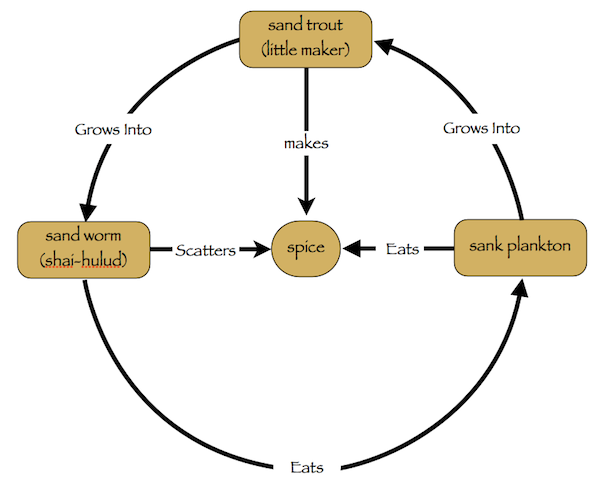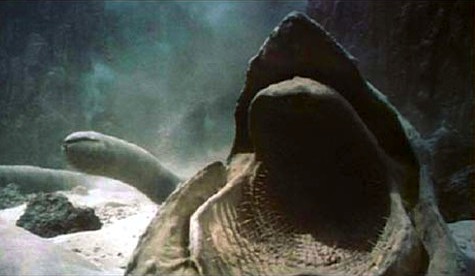When I sat down to think about which bits of science I wanted to highlight in Frank Herbert’s Dune, one of the first things I thought of was Sandworm biology…
This is my favorite scene from Dune:
“Out of the sand haze came an orderly mass of flashing shapes—great rising curves with crystal spokes that resolved into the gaping mouths of sandworms, a massed wall of them, each with troops of Fremen riding to the attack. They came in a hissing wedge, robes whipping in the wind as they cut through the melee on the plain.
Onward toward the Emperor’s hutment they came while the House Sardaukar stood awed for the first time in their history by an onslaught their minds found difficult to accept.”
Whose mind could accept shai-hulud; the Maker; Grandfather of the Desert; the Sandworm of Arrakis?
Much has been written on the great sandworms, though perhaps no one understood them better than the great Pardot Kynes, first Imperial Planetologist of Arrakis.
But even after reading Dr. Kynes’ report, “The Ecology of Dune,” I’m left with a few questions about the life cycle of the Maker.
Since I’m not as well versed in Dune-lore as many people on this site, I’m hoping that some of you can help fill in the gaps of my knowledge.
The Basics
Here’s the key excerpt from Dr. Kynes’ report:
“Now they had the circular relationship: little maker to pre-spice mass; little maker to shai-hulud; shai-hulud to scatter the spice upon which fed microscopic creatures called sand plankton; the sand plankton, food for shai-hulud, growing, burrowing, becoming little makers.”
For those of you who are more visually minded:

Questions
So now we’ve seen the life-cycle, as explained by Dr. Kynes. So here are my two questions:
- Where does sand plankton come from? Is it self-propagating?
- What triggers the transformation of sand plankton into little makers?
If you know the answer(s), please leave it in the comments! Please specify the source where you’re getting the information from. (A canonical book, something you saw in a movie, something you thought of on your way to the store, etc.)
Dr. Lee Falin is a Bioinformatician, the host of the Everyday Einstein’s Quick and Dirty Tips podcast, and the author of the “Science Fictioned” series, in which he takes scientific research articles and turns them into science fiction and fantasy short stories for middle grade and young adult readers.










